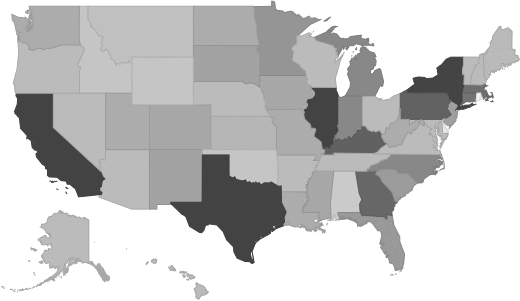- (800) 311-5355
- Contact Us
| Historical | Forecasted | ||||||||||
|---|---|---|---|---|---|---|---|---|---|---|---|
| 2020 | 2021 | 2022 | 2023 | 2024 | 2025 | 2026 | 2027 | 2028 | 2029 | 2030 | |
| Market Size (Total Revenue) | Included in Report | ||||||||||
| % Growth Rate | |||||||||||
| Number of Companies | |||||||||||
| Total Employees | |||||||||||
| Average Revenue per Company | |||||||||||
| Average Employees per Company | |||||||||||



| Company Size | All Industries | Temporary Shelters |
|---|---|---|
| Small Business (< 5 Employees) | Included | |
| Small Business (5 - 20) | ||
| Midsized Business (20 - 100) | ||
| Large Business (100 - 500) | ||
| Enterprise (> 500) | ||
| Industry Average | Percent of Sales | |
|---|---|---|
| Total Revenue | Included | |
| Operating Revenue | ||
| Cost of Goods Sold (COGS) | ||
| Gross Profit | ||
| Operating Expenses | ||
| Operating Income | ||
| Non-Operating Income | ||
| Earnings Before Interest and Taxes (EBIT) | ||
| Interest Expense | ||
| Earnings Before Taxes | ||
| Income Tax | ||
| Net Profit | ||

Cost of Goods Sold
Salaries, Wages, and Benefits
Rent
Advertising
Depreciation and Amortization
Officer Compensation
Net Income
| Financial Ratio | Industry Average |
|---|---|
| Profitability Ratios | Included |
| Profit Margin | |
| ROE | |
| ROA | |
| Liquidity Ratios | |
| Current Ratio | |
| Quick Ratio | |
| Activity Ratios | |
| Average Collection Period | |
| Asset Turnover Ratio | |
| Receivables Turnover Ratio | |
| Inventory Conversion Ratio |
| Product Description | Description | Revenue ($ Millions) |
|---|---|---|
| Industry total | Included | |
| Contributions, gifts, & grants - government | ||
| Contributions, gifts, & grants - private | ||
| Social assistance related to shelter for the general population | ||
| Temporary shelter services for the homeless | ||
| Temporary shelter for the abused & victims of domestic violence | ||
| Social assistance services for children, youth, & families | ||
| All other revenue | ||
| Investment income, including interest & dividends | ||
| Social assistance services for adults | ||
| Title | Percent of Workforce | Bottom Quartile | Average (Median) Salary | Upper Quartile |
|---|---|---|---|---|
| Management Occupations | 12% | Included | ||
| Chief Executives | 1% | |||
| General and Operations Managers | 3% | |||
| Other Management Occupations | 6% | |||
| Business and Financial Operations Occupations | 8% | |||
| Business Operations Specialists | 6% | |||
| Community and Social Service Occupations | 30% | |||
| Counselors, Social Workers, and Other Community and Social Service Specialists | 30% | |||
| Social Workers | 8% | |||
| Child, Family, and School Social Workers | 5% | |||
| Miscellaneous Community and Social Service Specialists | 17% | |||
| Social and Human Service Assistants | 13% | |||
| Personal Care and Service Occupations | 10% | |||
| Other Personal Care and Service Workers | 9% | |||
| Residential Advisors | 5% | |||
| Residential Advisors | 5% | |||
| Office and Administrative Support Occupations | 14% | |||
| Transportation and Material Moving Occupations | 6% | |||
| Company | Address | Revenue ($ Millions) |
|---|---|---|
Included | ||